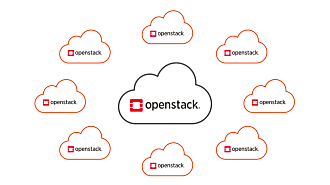Mark Baker
on 12 November 2012
Do closed clouds slow down time to market?
Get close to the business. It is a maxim CIOs live by. It means understanding exactly what drives the organisation.
In a downturn, everyone wants to cut costs, but in some businesses, this is not as important as other ambitions, such as accelerating product development. In the pharmaceuticals industry, for example, time to market for new products can offer strategic advantage over the competition. In some estimates, a 50-day improvement in product approval can result in $50 million greater revenue for the business.
In this scenario, making a 10 per cent saving on database licenses is not going to impress a CIO’s peers in the business, desirable though it may be for the IT budget (if the total IT spend is just 4 per cent of revenue). As well as saving money on internal costs, CIOs need to ensure their systems support continuous improvement in the business.
Business Improvement
IT can help research units, recruit teams, gather data, test prototypes, apply for patents and plan production. To do this they need rapid scaling of existing applications or rapid deployment of new applications. Waiting a few days for each bit of a technical solution could result in millions of dollars or pounds in lost opportunity.
Collaboration is another important factor. Evidence from the pharmaceutical industry shows that companies working with suppliers to speed development and share research results are improving their time to market. Creating this kind of partnership can mean rapidly integrating and expanding IT systems.
Private Cloud
Investment in private clouds is being driven by a desire for agility in business, supporting activities including product development. Research by IDC shows that in July 2011, 91 per cent of businesses listed improved business agility as a top goal when using private clouds.
Given the benefits of cloud computing in supporting the agility necessary for rapid product development, it is worth taking a look at the two main approaches to the technology.
Proprietary vendors provide software to create private clouds or offer public clouds as a service. As with any proprietary product, the vendor has spent a lot of money developing its technology. To ensure it gets the best possible return on investment, it hopes customers stay on its technology as long as possible, so it is in the interest of a proprietary vendor to make it difficult for customers to migrate to another system or provider.
If an organisation chooses to depend on an proprietary API which is not a de facto standard, it could make the implementation incompatible with other cloud platforms. If the proprietary vendor does not offer the functionality required, or another vendor is better for commercial or geographic reasons, it can be difficult to move.
Proprietary vendors often say their tools make it easier to deploy private cloud solutions. But these tools will only work with their technology. Such orchestration tools are also available for open cloud systems and allow users to deploy on a mix of cloud technologies, so long as they support open standards. This will be an advantage if a firm wishes to burst workloads from a private cloud to a public cloud provider of its choice when supporting rapid product development.
As Europe struggles with recession, it is important to note that companies more nimble in product development can better serve the changing needs of their customers. The IT department needs to embrace technologies that can accelerate time to market. CIOs restricting themselves to closed cloud technologies could hold back the business, rather than getting closer to its driving forces.
If you’re thinking about what cloud approach best suits you, then take a look at our Starter Checklist today.
Want to receive this content direct in your inbox? Register here.



